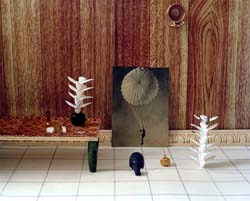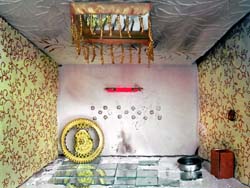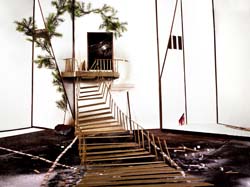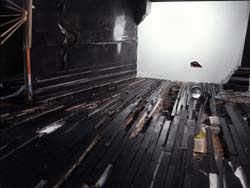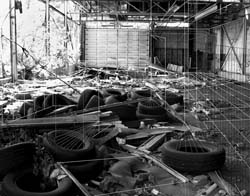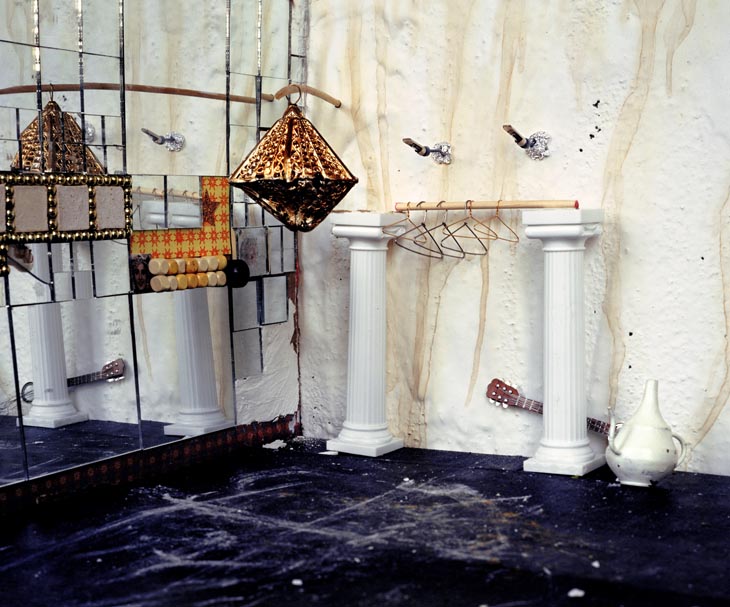

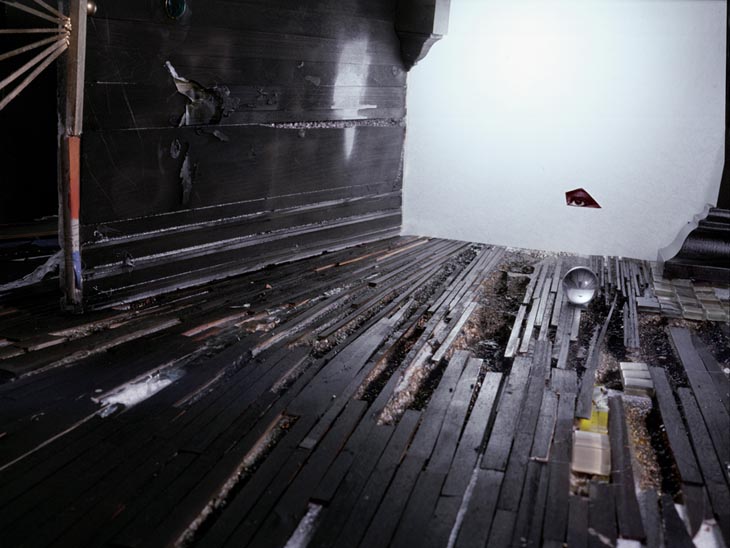


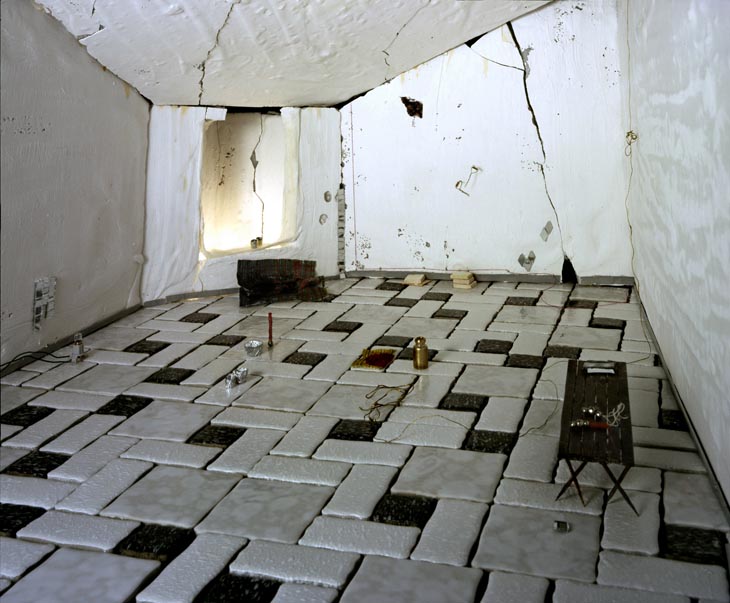

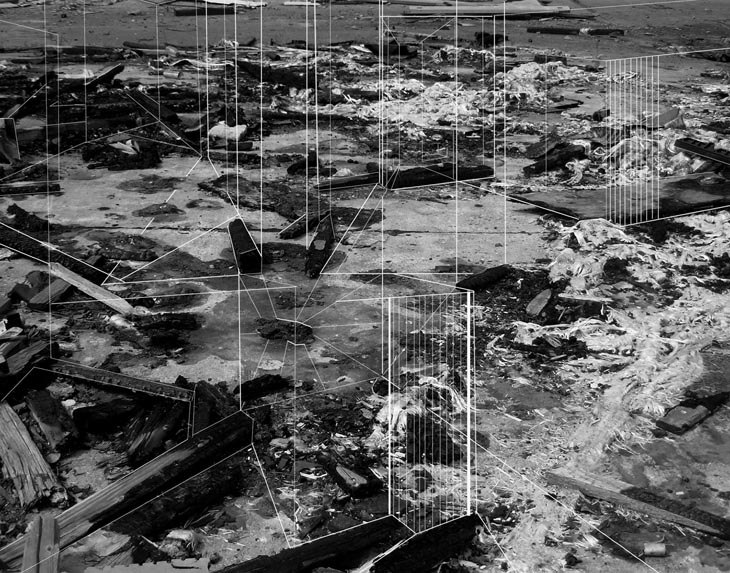

Yamini Nayar
In Being There, Nayar conceives a miniature room of paneled glass and fake columns with coat-hangers and a protruding guitar handle residing close to the floor. The walls and the floor appear uneven, resembling a kitsch corner for idle recreation. In the centre of the photograph is a bamboo stick bent slightly, jutting from the wall with a lamp-shade shaped like a beehive. Nayar explains her photographic works as a series of "spaces that question the iconic in photographic memory, where found images are pivot points for imagined, alternate structures."
Yamini Nayar’s work What Is Essential is composed of readymades juxtaposed into an interesting configuration of modern narrative. A photograph of a parachutist in faded black and white is resting between the tiled floor and the laminated fake wooden wall. The photograph and the array of porcelain and plastic objects appear to be organised as one might arrange a desk. The work explores the intimacy of objects in space, as they reference that of a found photograph central to the composition.
Nayar’s constructs recall the work of German artist Thomas Demand, renowned for his paper interiors that, once photographed, allude to something significant having taken place. However unlike Demand’s work, her fictionalised interiors such as Sincere are less a reconstruction from recent history and more away into the artist’s imagination, in which objects and emblems are juxtaposed in architectonic niches. The artist uses both made and found objects as well as images sourced from cinema, photographic archives and mass media to create these interiors.
Yamini Nayar works with installation and architecture as photography, creating imagined, psychologically laden interiors from found and discarded materials. These installations are destroyed after the work is photographed, so that the photographic image serves as a stand-in for the original work. In representing invented spaces as still images, any sense of scale is concealed from the audience. The interiors appear destroyed by acts of nature. In Underfoot and Overhead a dishevelled staircase falls precariously from a doorway with a thread of foliage hanging over the darkened entrance. Once inside, a single light-bulb appears to illuminate a darkened room. The work takes its name from a Rudyard Kipling poem.
Luck is the Residue of Design shows a seemingly abandoned space which the earth appears to have shaken dramatically. The delicate shell of walls and floor appear to have cracked under the weight of temporary motion. The alcove at the back seems to have taken some of the force of an act of nature or the weight of something man-made. The use of foreshortening creates a sense of compression and claustrophobia in this imagined interior.
A more recent photographic work Cleo (2009) shows a darkened attic with broken floorboards and an unfinished partition wall with an eye crudely cut into the back wall. The composition resembles a scene from a faded horror film. Nayar conceives and then constructs scenes of heightened melodrama. Nayar’s works lie somewhere between post-explosive moments of reality and dream like scenarios in which humanity has been wiped out.
Thin white lines are spread very precisely over the surface of the photograph as the artist uses previous documentation as a place from which to invent something else. Nayar’s drawings appear to suggest that she has arrived too late to save this piece of reality and is instead seeking order in the remains of littered chaos. The end of everything is the point at which Nayar introduces creativity to consider what can still be possible.
By drawing directly onto photographs, Nayar’s 2008 series recalls the work of French architect Yona Friedman and his portfolio of working sketches and formal solutions for which he draws and scores directly onto documentation of pre-existing architectural spaces. Such inventiveness is at the root of Nayar’s geometric interventions that have her redesigning damaged cityscapes in order to suggest greater possibilities. In this work, Nayar manages to invent order out of chaos, to seek sense where there are only the remnants of destruction.

